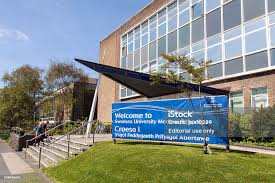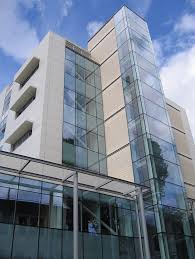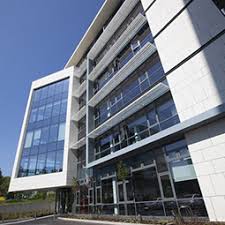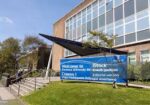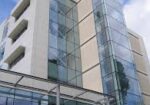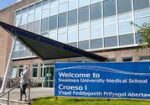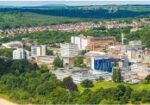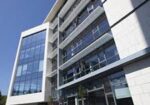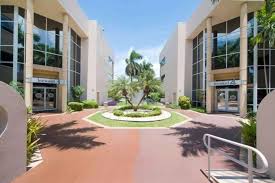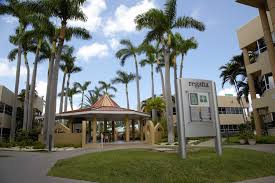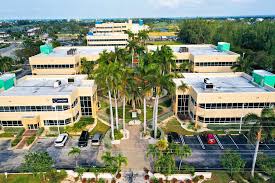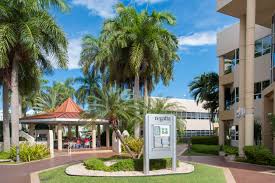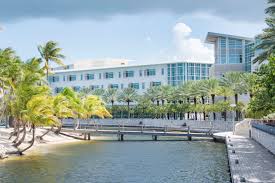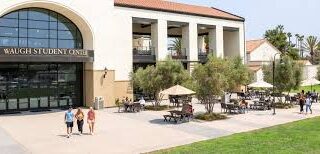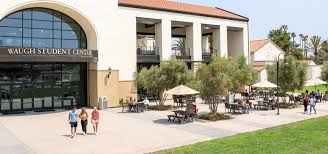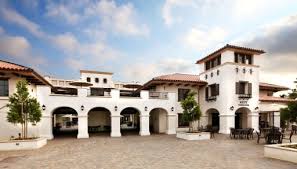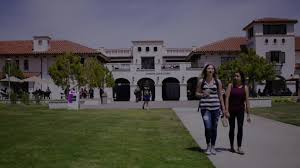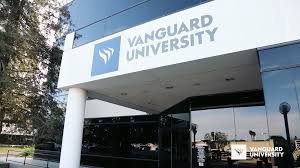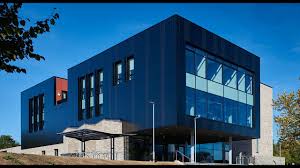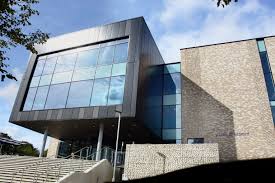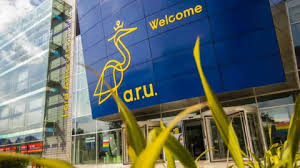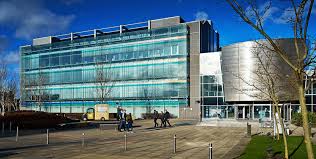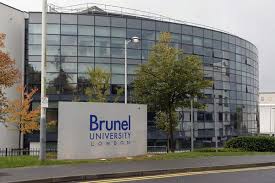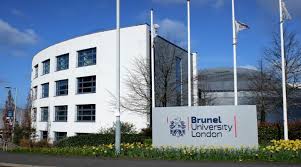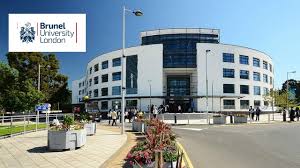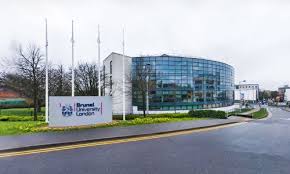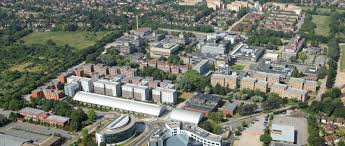Swansea University Medical School Since its founding in 1920, Swansea University has been making continuous contributions to world-leading research and academic excellence. With a long tradition of partnership with industry and business communities, the University’s reach now goes far beyond commercial collaborations—having a profound impact on global health, economy, culture, and general well-being of society.
About Swansea University Medical School
Over the last few years, Swansea University has made outstanding progress in research, outperforming the activity levels of many bigger institutions. This has been accomplished without sacrificing the friendly, open, and hospitable atmosphere that characterizes the special “Swansea experience.” As a progressive 21st-century institution, Swansea aims to become an internationally connected university—committed to solving global issues, enhancing lives, and providing inspiring, future-oriented education.
Swansea University Medical School – Table of Contents
- About
- Advantages
- Departments And Course Duration
- Facilities And Infrastructure
- Required Documents
- Eligibility Criteria
- Admission Process
- Benefits
- Privileges And Benefits for Indian Students
- FAQ’s
The University’s journey started on 19 July 1920, when King George V laid the foundation stone. In the same year, 89 students, including eight trailblazing women, enrolled in what was then a modest academic institution. By the start of World War II in 1939, the University had expanded to comprise 65 staff and 485 students.
Then, the campus was merely two permanent buildings: the ancient Singleton Abbey and the library. With a growing appreciation for a comprehensive, well-integrated academic environment, Principal J.S. Fulton dreamed of an autonomous university community that fused residential, academic, and social spaces—a revolutionary vision that gave Swansea the distinction of being the UK’s first actual university campus.

Swansea University Medical School Accreditations, Affiliations, Recognitions
The 1960s were a decade of rapid development, the building of new facilities such as new halls of residence, the Mathematics and Science Tower, and College House (now Fulton House in memory of the far-sighted principal). The 1960s saw Swansea acquire a global reputation when Professor Olek Zienkiewicz invented the finite element method, a revolutionary method that revolutionized engineering and product design across the globe—firmly establishing Swansea as a respected academic and research university.
Subsequent extensions comprised the development of the Hendrefoelan student village in 1971, the creation of the South Wales Miners’ Library in 1973, and the inauguration of the Taliesin Arts Centre in 1984, which infused arts and culture into the core of campus life.
A significant milestone was reached in 1992, when the Regional Schools of Nursing were brought into the university, adding further to its healthcare education. The Swansea University College of Medicine—now Swansea University Medical School—was formally opened in 2001, providing the foundation for world-class medical and life sciences research.
In 2005, the University established Technium Digital, a centre of digital innovation. This was then followed in 2007 by the launch of the Institute of Life Science (ILS), which serves as a critical enabler for translating academic research into commercial reality. A second ILS building was under construction in 2009, further increasing the research capability of the University.
Maintaining its heritage of innovation, in 2012 Swansea began a revolutionary campus expansion. This has involved the opening of the new Bay Campus in 2015, which is now home to the College of Engineering and the School of Management. In 2018, the University marked the opening of two significant projects: The College, a partnership with Navitas (formerly ICWS), and the Computational Foundry, a state-of-the-art building that is the new home for the College of Science’s Computer Science and Mathematics departments.
Along all these developments, Swansea University Medical School has been leading the way—fostering high-impact research, developing great professionals, and building a healthier, more innovative future for society.
Latest Notifications:
Advantages of Studying in Swansea University Medical School
Academic Excellence and Research Opportunities
-
Renowned for Research Excellence
Swansea University Medical School is consistently ranked among the top medical schools in the UK for research quality, with a significant portion of its research rated as world-leading or internationally excellent.
-
Thriving Research Environment
The School fosters a dynamic and collaborative research culture, attracting competitive funding, leading academics, and dedicated PhD students. It has strong interdisciplinary ties, especially with the Faculty of Science and Engineering, and the pioneering Centre for Nano Health.
-
Clinical and Industry Impact
Research at Swansea doesn’t stay in the lab—it directly informs clinical practices and healthcare delivery. Strong industry partnerships ensure the curriculum stays relevant, practical, and aligned with healthcare innovations.
Career-Focused Education
-
Career-Oriented Undergraduate Programs
The Medical School offers career-focused undergraduate programs in medical sciences, preparing students for diverse paths including medicine, biomedical research, and healthcare innovation.
-
Top-Ranked Graduate Entry Medicine Program
The Graduate Entry Medicine MBBCh course is consistently ranked among the top 5 in the UK, offering a rigorous and respected pathway into the medical profession.
Innovative Teaching and Learning
-
Personalized Learning Experience
With a smaller cohort size (around 150 students per year), Swansea provides a more personalized educational experience with greater interaction between students and faculty.
-
Early Clinical Exposure
Students engage in hands-on clinical placements from their very first term, gaining early and meaningful experience with patients and real healthcare settings.
-
Welsh Language Opportunities
Students have the option to take the Doctor as Professional module in Welsh, and may qualify for financial support or scholarships through Coleg Cymraeg Cenedlaethol.
-
Cadaver-Based Anatomy in Year 1
The BSc in Applied Medical Sciences is among the few undergraduate programs in the UK offering cadaver-based anatomy training from the first year, providing a deep and practical understanding of human anatomy.
-
Pathway to Medicine
The BSc Applied Medical Sciences program forms part of the “Medical Science in Practice” pathway. Students who meet the entry requirements are guaranteed an interview for the Graduate Entry Medicine MBBCh program—streamlining the transition into a medical career.
Campus and Lifestyle Benefits
-
Stunning Campus Setting
Set in a scenic coastal location, Swansea University offers a beautiful and inspiring study environment, combining green spaces with modern facilities.
-
Safe and Lively City
Swansea is known for being a safe, student-friendly city with a rich cultural scene and affordable cost of living—ideal for both academic focus and social life.
-
Supportive Community with Strong Networks
The university prides itself on a welcoming, inclusive community and maintains strong working relationships with the NHS, local businesses, and charitable organizations.
-
Active Student Life
With nearly 50 sports clubs and over 150 student societies, students have ample opportunity to engage in extracurricular activities, develop new skills, and build lifelong friendships.
Departments And Course Duration in Swansea University Medical School
MBBS Program at Swansea University Medical School
At Swansea University, the MBBS-equivalent degree is known as the Graduate Entry Medicine (MBBCh) program. Unlike traditional undergraduate MBBS programs, this is a four-year graduate-entry medical degree, designed for students who already hold an undergraduate degree in a related field.
Course Duration
-
Graduate Entry Medicine (MBBCh)
Duration: 4 years (Full-Time)
Level: Graduate Entry (Applicants must already hold a bachelor’s degree in a life/health science-related subject) -
Pathway to Medicine (BSc Applied Medical Sciences)
Duration: 3 years (Full-Time)
Leads to a guaranteed interview for the MBBCh program if entry requirements are met
Departments at Swansea University Medical School
-
Graduate Entry Medicine (MBBCh)
- Offers clinical-based training from year one
- Strong emphasis on professionalism, patient contact, and evidence-based medicine
- Structured around systems-based learning (Cardiovascular, Respiratory, Musculoskeletal, etc.)
- Partnered with NHS Wales for clinical placements
-
Applied Medical Sciences
- Offers the BSc (Hons) in Applied Medical Sciences
- Includes modules like human anatomy, physiology, genetics, pharmacology, and research skills
- Cadaver-based anatomy training in Year 1
- Designed to prepare students for clinical or research careers
-
Population Health and Medical Sciences
- Focuses on public health, epidemiology, health data science, and disease prevention
- Offers modules and postgraduate programs in Health Informatics and Public Health
-
Biomedical Sciences
- Supports teaching in human biology, pathology, molecular biology, and biochemistry
- Linked with research at the Institute of Life Science (ILS)
-
Life Science and Research
- Involves translational research in areas such as cancer, neuroscience, diabetes, and genetics
- Strong ties to the Institute of Life Science for applied and clinical research
-
Pharmacy and Pharmaceutical Sciences (Part of allied health programs)
- Although not part of the MBBS-equivalent course, this department plays a vital role in drug discovery and patient-focused pharmacy education
Clinical Training Partners
- Hywel Dda University Health Board
- Swansea Bay University Health Board
- Cardiff and Vale University Health Board
- Powys Teaching Health Board
Students rotate across different clinical settings including hospitals, GP surgeries, and community care centers.
Latest Updates:
Facilities And Infrastructure at Swansea University Medical School
Swansea University Medical School is one of the UK’s leading institutions for medical education and research. The school offers world-class facilities and an inspiring academic environment to support both learning and innovation.
1. Institute of Life Science (ILS)
- Flagship medical research facility built with an investment of over £100 million.
- Houses cutting-edge laboratories for biomedical and life sciences research.
- Focus on translational medicine, nanomedicine, and neuroscience.
- Collaborations with industry partners like Siemens and IBM.
2. Centre for NanoHealth (CNH)
- A unique facility integrating nanotechnology and medical science.
- Supports advanced research in diagnostics, therapeutics, and drug delivery.
- Provides hands-on research opportunities for students and scholars.
3. Advanced Teaching Laboratories
- Equipped with the latest biomedical instruments and learning technology.
- Includes dedicated spaces for molecular biology, genetics, biochemistry, and anatomy.
- Cadaver-based anatomy labs available for Applied Medical Sciences students.
4. Clinical Skills and Simulation Centre
- Realistic hospital and clinical ward simulations.
- Enables students to practice procedures, patient interaction, and emergency scenarios.
- Includes virtual learning tools, mannequins, and AV technology for performance feedback.
5. Medical School Library & Learning Resources
- Access to online and physical collections of medical textbooks, journals, and clinical guidelines.
- Includes quiet zones, collaborative learning areas, and 24/7 digital access to materials.
- Integrated support for referencing, academic writing, and data analysis.
6. Campus & Student Life Infrastructure
- Singleton Park Campus: Home to the Medical School—nestled in a scenic coastal setting.
- Bay Campus: Hosts the Colleges of Engineering and Management, with modern lecture halls and student services.
- Modern lecture theatres, seminar rooms, and computing suites across both campuses.
- Dedicated postgraduate and research student spaces.
7. Student Accommodation
- Comfortable and affordable on-campus and off-campus housing options.
- Facilities include en-suite rooms, shared kitchens, internet access, and student lounges.
- Family accommodation and accessible units available.
8. Sports, Health & Wellbeing Facilities
- Access to the Swansea University Sports Village:
- Gym and fitness suites
- Swimming pool and sports halls
- Outdoor pitches and courts
- On-campus medical centre, counselling services, and wellness programs.
9. Digital Infrastructure
- High-speed Wi-Fi and virtual learning platforms (Canvas) across campus.
- E-resources, online submission portals, and lecture recordings for hybrid learning.
- Advanced data analytics and informatics systems supporting research and education.
Official site For Swansea University Medical School: Click Here
Required Documents For Admission in Swansea University Medical School
- Original Birth Certificate
- Copy of a valid passport
- NEET Scorecard
- CV (if required)
- Statement of Purpose
- Reference letter(s)
- Certificate of English proficiency test – IELTS/TOEFL/C1 Advanced
- Financial Documents as Proof of financial ability
- Academic transcription or proof of your previous academic
- Transfer certificate
- Photocopy of IELTS/UKCAT/BMAT scores
- A personal statement that illustrates why you’re coming to the UK.
Eligibility Criteria For Admission in Swansea University Medical School
- Pass 10+2 exam with PCB as main subject.
- Score at least 80-90% of marks in the 10+2 exam.
- Qualify NEET UG Exam.
- Clear UCAT & BMAT Medical Entrance Exam in the UK.
- Submit a certificate of IELTS or TOEFL.
- Migration certificate.
- Valid passport.
- Passports size photographs.
- Candidate VISA.
Admission Process For Swansea University Medical School
Apply Online
Fill out the application form on the university’s official website.
Send Printed Application & Documents
Print, sign, and post the completed form along with required documents to the university.
Email Scanned Documents
Also email scanned copies of your documents with the subject line: “Application for Admission”.
Submit Before Deadline
Make sure all documents are sent before the application deadline.
Application Review
The university will assess your application and send an acceptance or rejection letter.
Pay Initial Fees
If accepted, pay the initial fee to receive your official admission confirmation.
Legalize Documents
Get your academic documents translated, apostilled, and attested as required.
Apply for Student Visa
Use the university’s official Invitation Letter to apply for your UK student visa.
Get More Details About The Colleges in UK: Click Here
Benefits of Studying in Swansea University Medical School
1. Academic Excellence
- Ranked among the top UK medical schools for research quality and impact.
- The Graduate Entry Medicine (MBBCh) course consistently ranks in the UK top 5.
- Strong emphasis on clinical practice, scientific understanding, and research skills.
2. Cutting-Edge Research & Innovation
- Home to the Institute of Life Science (ILS) – a £100 million research centre.
- Pioneering work in nanomedicine, public health, and neuroscience.
- Opportunities to work on real-world, impactful research projects during studies.
3. Career-Focused Education
- Courses like Applied Medical Sciences and Pathway to Medicine are designed to prepare students for careers in medicine, research, and healthcare.
- Guaranteed interview for Graduate Entry Medicine for students meeting pathway criteria.
- Strong links with the NHS and healthcare industry to enhance employability.
4. Personalized Learning
- Small class sizes for more direct interaction with faculty.
- Early and continuous clinical exposure from the first term.
- Teaching includes modern simulation labs, patient contact, and cadaver-based anatomy.
5. Support for International Students
- Welcome environment for international students, including those from India.
- Courses and modules available in Welsh for bilingual support.
- Scholarships and financial assistance available through partnerships like Coleg Cymraeg.
6. Beautiful & Safe Campus Location
- Located at Singleton Park, just steps from the scenic Swansea Bay.
- Recognized as a safe and vibrant city ideal for student life.
- Excellent student accommodation, transport links, and social life.
7. Rich Student Life
- Over 150 student societies and nearly 50 sports clubs to join.
- State-of-the-art sports facilities, libraries, cafes, and wellness centres on campus.
- Active medical student community and support groups.
Privileges And Benefits for Indian Students in Swansea University Medical School
Academic Opportunities
- Pathway to Medicine: Indian students enrolled in the Applied Medical Sciences BSc program can qualify for a guaranteed interview for the Graduate Entry Medicine (GEM) MBBCh program if minimum criteria are met.
- Exposure to cadaver-based anatomy from Year 1 – rare in undergraduate UK programs.
- Access to world-class teaching and research, including the Institute of Life Science (ILS).
International Student Support
- Dedicated International Admissions Team to assist with application, visa, and arrival processes.
- Pre-arrival webinars and orientation programs tailored to international students.
- Indian student groups and cultural societies provide a sense of community.
Scholarships & Financial Aid
- Indian students are eligible for a range of international scholarships
- International Excellence Scholarships
- Global Wales Postgraduate Scholarship
- Some programs may also offer early bird fee discounts.
Clinical & Career Advantages
- Direct links with the NHS and healthcare industries in Wales.
- Strong reputation and graduate success in clinical practice, biomedical research, and public health.
- Indian students benefit from placement and internship opportunities integrated into the curriculum.
Cultural Diversity & Inclusion
- Swansea is home to a diverse student body with many students from South Asia, making it culturally inclusive.
- Celebrations of Indian festivals like Diwali, Holi, and Independence Day on campus.
- Availability of Indian food options on and around campus.
Ideal Location & Living Environment
- Swansea is a safe, student-friendly coastal city, more affordable than many UK cities.
- University accommodations cater to international students with fully furnished rooms and 24/7 support.
- Convenient travel links to major cities like London, Cardiff, and Birmingham.
English Language & Academic Support
- Pre-sessional English and Academic Writing courses for non-native speakers.
- One-on-one tutoring and study support to ease the transition to UK-style learning.
FAQ’s
Is the medical degree recognized in India?
Yes, degrees from Swansea University are internationally recognized. Indian students should ensure the program is listed by NMC (National Medical Commission) for future licensing in India.
Is clinical exposure provided during the course?
Yes, Students begin clinical placements from the first term in the MBBCh program and receive training in real NHS settings throughout the course.
Are there Indian student communities on campus?
Yes, there’s a vibrant Indian student group and South Asian societies that host festivals, networking events, and cultural celebrations.
What is student life like in Swansea?
Swansea is a safe, coastal city with a low cost of living. The campus offers excellent facilities, sports clubs, cafes, libraries, and a welcoming international environment.
Is Swansea Medical School accredited?
Yes, it is accredited by the General Medical Council (GMC) for its Medicine program.
What is the teaching style at Swansea Medical School?
Integrated curriculum (early clinical exposure).
Problem-based learning (PBL), lectures, and hospital placements.
Also Check:
